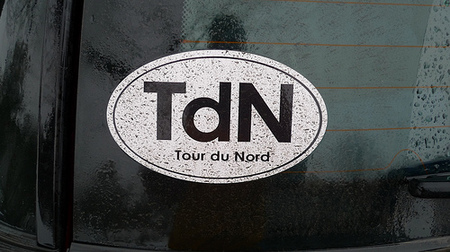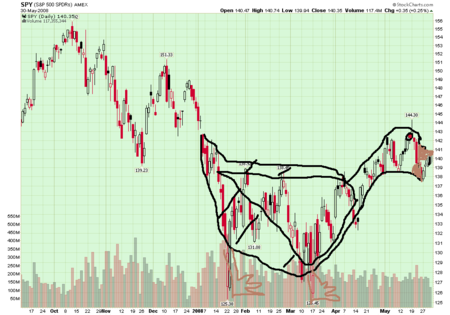Middle class faded out above $140,000 to $250,000 per year, back in 1993.
Paul Krugman, 1993 on Bill 'Middle Class Tax Cut' Clinton's tax plan:
Bill Clinton's economic program: higher income taxes for wealthy Americans. Families with taxable incomes above $ 140,000 currently pay a tax rate of 31 percent. The Clinton plan will raise that rate to 36 percent, and families with taxable income over $ 250,000 will pay 39.6 percent.
...
Suppose a couple earning $ 200,000 a year has a $ 600,000 mortgage, two children in expensive colleges, large car payments and lavish tastes.
The Clinton Tax Increase: Why taxing the rich makes sense
SYNOPSIS:
A big fight is looming over one of the key elements of Bill Clinton's economic program: higher income taxes for wealthy Americans. Families with taxable incomes above $ 140,000 currently pay a tax rate of 31 percent. The Clinton plan will raise that rate to 36 percent, and families with taxable income over $ 250,000 will pay 39.6 percent. To block these increases, the Republicans have wheeled out heavy intellectual artillery. Harvard's Martin Feldstein, a former Reagan adviser who fell out with his boss over federal budget deficit reduction, claims that new taxes on the rich will raise very little money and may even end up increasing the deficit.
Raising taxes on high incomes makes sense. During the 1980s, the incomes of the top 1 percent of families doubled in real terms while the incomes of middle-class households stagnated and the poor got poorer. The tax policies pursued by the Reagan and Bush administrations were not the main cause of the growing inequality in the United States, but they did favor the well-off. Now we face a huge budget deficit, much of it to pay interest on the debt run up under Reagan and Bush. It's not irrational to think that those who prospered most during the 1980s should pay a large share of the bills from that decade. It is also politically crucial for the Clinton administration to place as much of the new tax burden as possible on high-income families. After all, what is the alternative? Leaving aside the usual rhetoric about eliminating waste and fraud, the only serious option is to raise taxes or cut benefits for the middle class and poor. So while the president has called for a little bit of sacrifice from all Americans, he wants to concentrate the pain on people with high incomes. Indeed, he proudly declares that 70 percent of the taxes he proposes to raise will come from only 2 percent of the population.
Rich reaction. Nobody knows for sure how rich American families will react to Clinton's new tax initiatives. Think of a family that currently has a taxable income of $ 200,000. The Clinton program will raise the rate on the top $ 60,000 of that income from 31 to 36 percent; if the family doesn't change the way it works and saves, it will pay $ 3,000 in additional taxes. But suppose that the family decides, in the face of these higher taxes, to work a little less or to increase contributions to a tax-deferred retirement plan. If these steps reduced taxable income by $ 10,000, for example, the tax revenue will be $ 600 less than before.
Clinton's economic advisers have not released the assumptions and methodology behind their revenue estimates, but reports indicate that they assume no reduction in work effort and only a small amount of tax avoidance. In fact, it is possible that some high-income families may actually work harder because of higher taxes. Suppose a couple earning $ 200,000 a year has a $ 600,000 mortgage, two children in expensive colleges, large car payments and lavish tastes. To maintain this lifestyle, the couple might redouble their efforts in the workplace to compensate for the income lost to higher taxes.
What about tax loopholes? During the 1970s, well-off families engaged in elaborate legal schemes such as oil- and gas-drilling partnerships to shelter income from taxes. Supporters of Clinton's plan argue that today's tax laws offer many fewer loopholes -- and that the president's plan tries to close some of those that remain. Still, Clinton's critics claim that ingenious taxpayers and their lawyers will find legal ways to make taxable income vanish.
Despite the uncertainties, taxing rich American families to help reduce the nation's enormous budget deficit is a policy worth supporting. What is the downside? The new taxes on high incomes are only part of the Clinton plan. If revenue from these levies is $ 10 billion less than expected, it certainly won't kill the $ 6 trillion U.S. economy. Republicans worry about the impact of the tax increases on work incentives and economic growth, but the American economy thrived in the face of much higher taxes on well-off families during the 1950s and 1960s.
And consider the benefits. Higher taxes on the rich will probably raise a lot of money, although the revenues may not reach the $ 25 billion-a-year level that Clinton's advisers expect. Equally important, heavier taxes on the wealthy will help convince middle-class Americans that the sacrifices they still have to bear -- the energy tax and the soon-to-be-announced costs of health reform -- are fair.
So, two cheers -- and crossed fingers -- for the Clinton tax plan.
Originally published, 5.31.93

